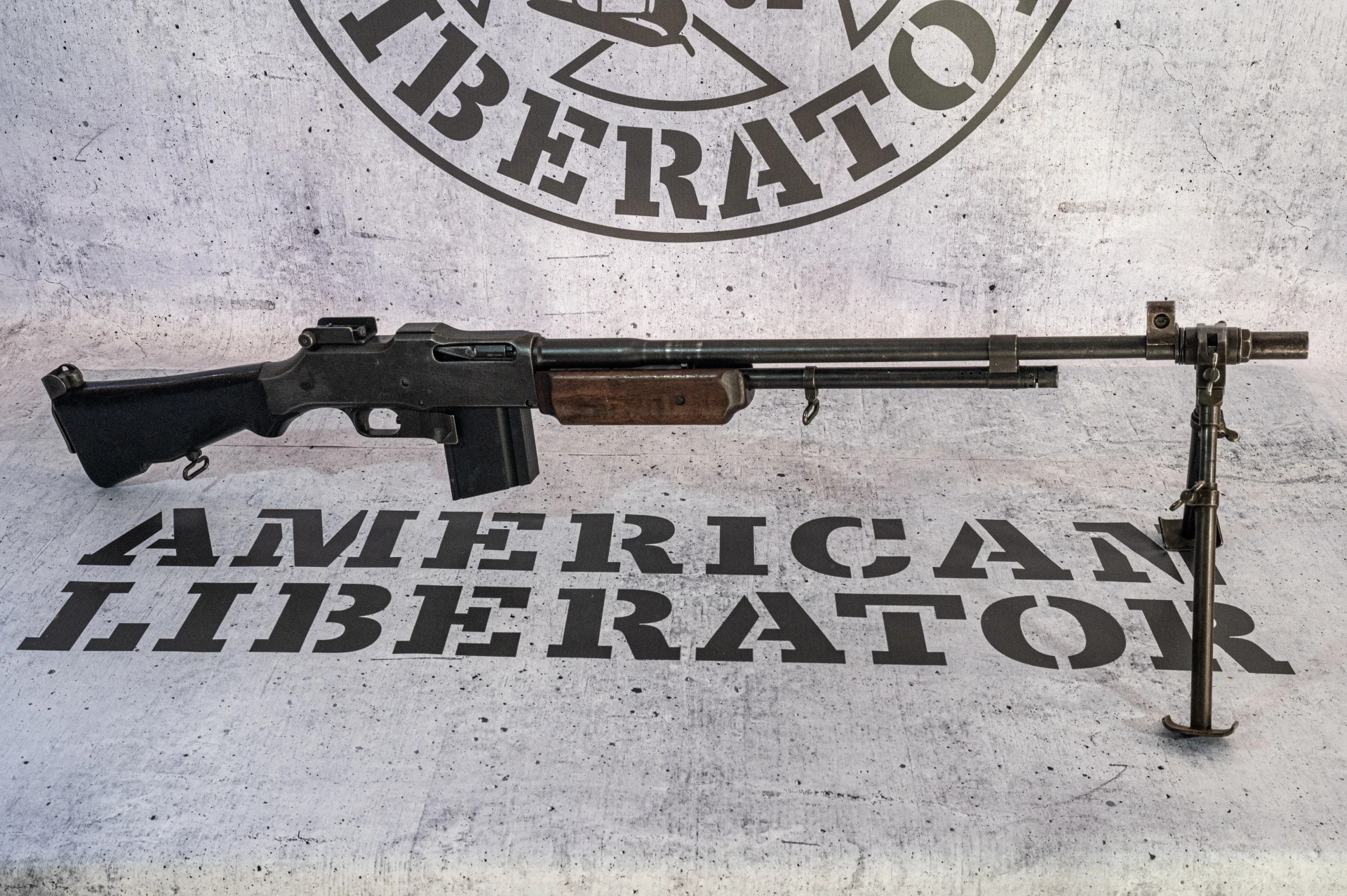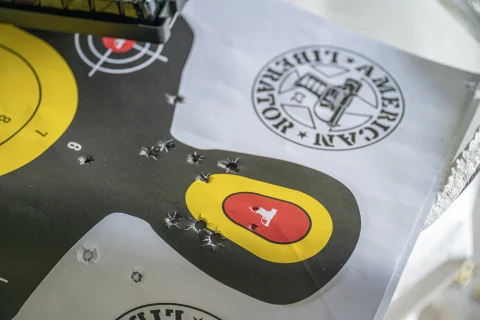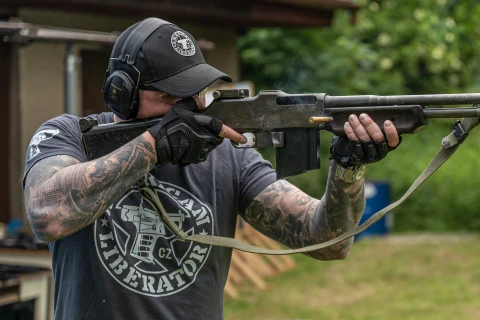- About us
- Photogallery
- Shooting Experiences
- Shooting courses
- E-shop
- Team building
- Shooting ranges
- Museum
- Contacts
Browning Automatic Rifle (BAR) 1918A2
After its demonstration, the weapon was accepted into the service of the U.S. Army. In 1918, it saw its first combat deployment in France. The army at that time had few weapons of this type and the adopted specimens were used more as heavy rifles. This was understandable with the first BAR M1918s, which did not have a bipod and could only be fired from the side or with a shoulder rest. The bipod did not appear on the weapon until 1937 with the BAR M1918A1 version. The last production version of the BAR M1918A2 had a redesigned bipod and a new stock support that further increased the weapon's stability when firing.
The M1918A1 and A2 versions became the US Army's main types. They were primarily used to augment the firepower of smaller units, rather than as a typical infantry support weapon. The original M1918 also saw action in World War II. In 1940, large numbers of BARs were acquired by Great Britain, which equipped its Home Guard units with them. Some BAR rifles found use in the armament of second-echelon units. Later versions reached production runs of thousands. BARs were very popular with the troops.
This is not to say that the BAR did not have some shortcomings. Its box magazine had a capacity of only 20 rounds, which was very small for most infantry operations. Because of its difficult to classify, the BAR gained little popularity with tactical theorists. With soldiers, however, it was popular. After 1945, the BAR saw service in the Korean War, and remained in the U.S. Army's arsenal until 1957. However, the weapon would also be seen during the Vietnam conflict and in the armies of other countries until almost the present day.
Related guns
-
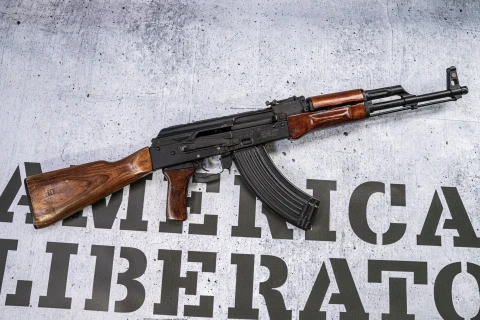
Izmash - SSSR AKM rifle
-
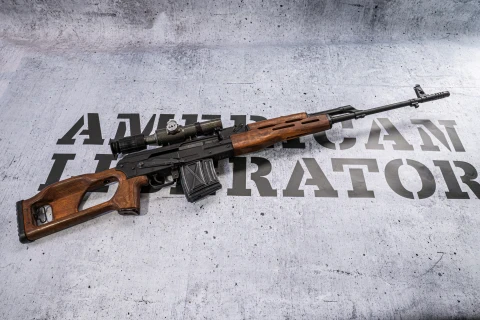
Romanian PSL ROMAK rifle
-

CZ BREN 2 Ms, .223 16,5" rifle
-

IMI Galil MAR "Micro Assault Rifle"
-

BERETTA BM59 Battle Rifle
-
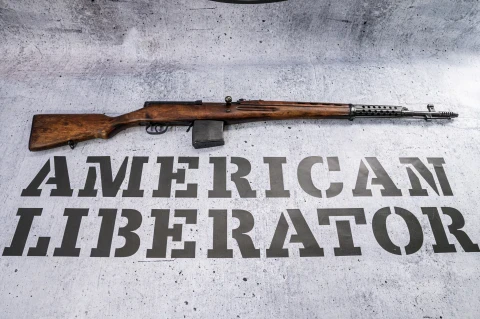
SVT-40 rifle
-

ZASTAVA M76 sniper rifle
-
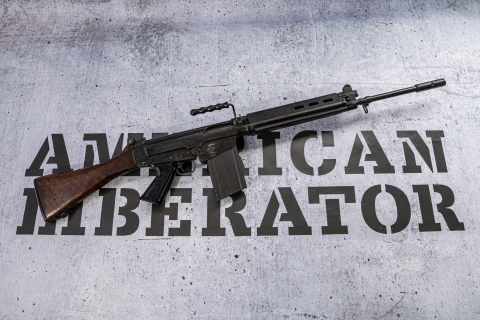
FN FAL Battle Rifle
-
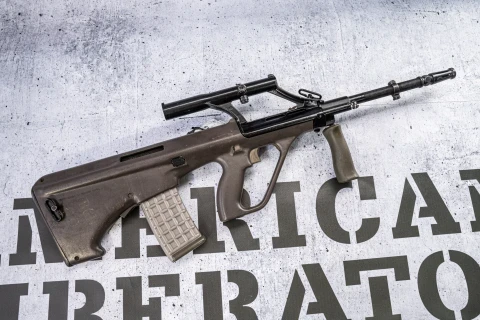
STEYR AUG rifle
-
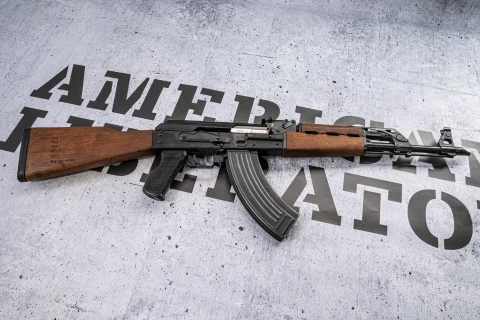
ZASTAVA M70B1 semi-automatic rifle
-

Romanian AKM clone / WUM CAA rifle
-

NORINCO CQ-A rifle
-
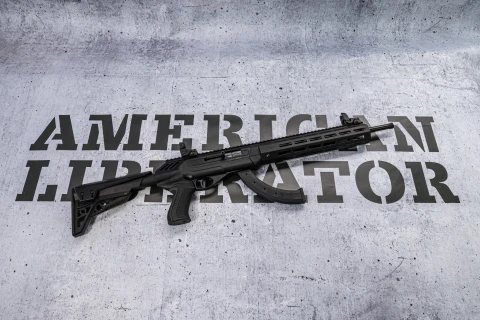
CZ 512 Tactical rifle
-
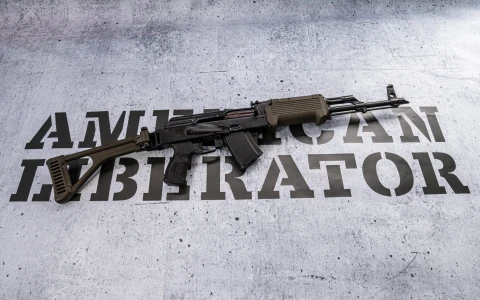
Romanian AKM clone / TAPCO
-
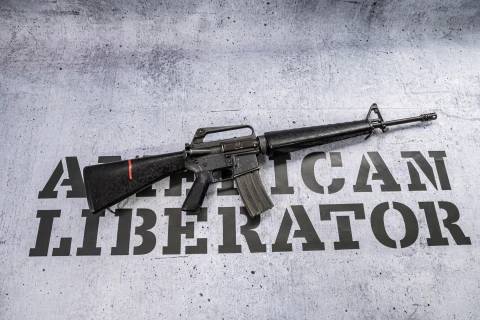
COLT M16A1 rifle
-

Tula SSSR AKM rifle
-

Smith & Wesson M&P 15-22 Sport rifle
-
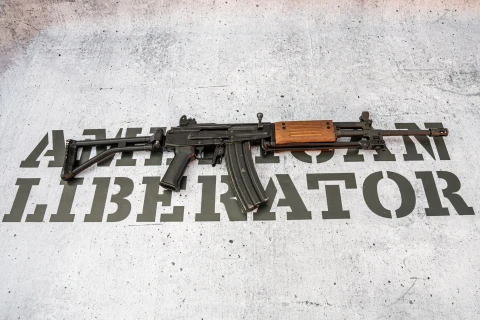
IMI Galil ARM "Assault Rifle and Machine gun"
-
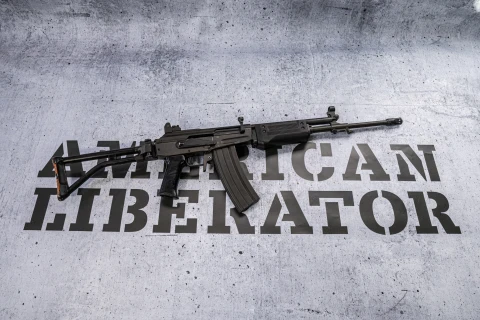
IMI Galil AR "Assault Rifle"
-

CZUB VZ. 58 Rifle
-

LUVO-15 MGL M-Lock, 10,5" Rifle
-

FN FAL Battle Rifle
-
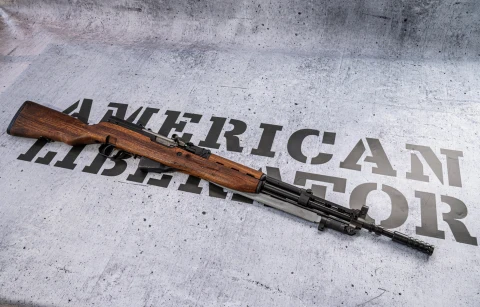
Zastava SKS M59/66 semi-automatic rifle
-
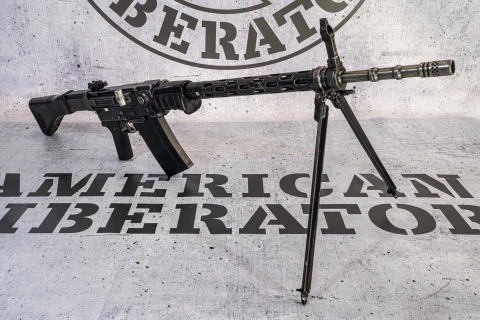
Sturmgewehr 57 / STGW 57 rifle
-
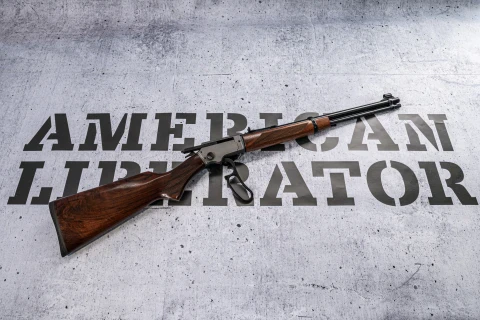
CHIAPPA L.A. 322 TAKE DOWN DeLuxe rifle
-
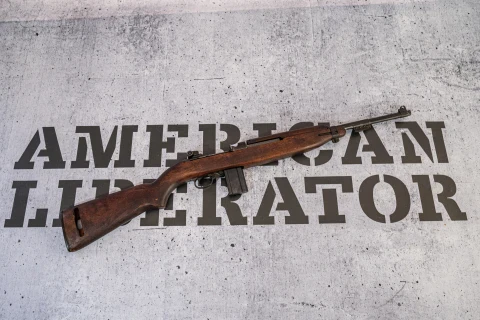
M1 Carbine semi-automatic rifle
-
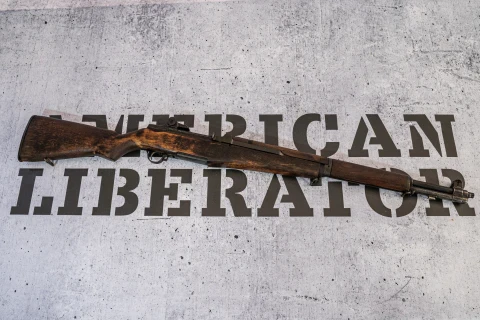
M1 Garand semi-automatic rifle
-
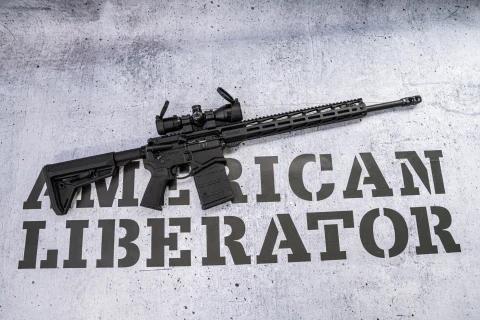
Ruger SFAR 20" semi-automatic rifle
-

Ruger AR-556 10,5" semi-automatic rifle
-
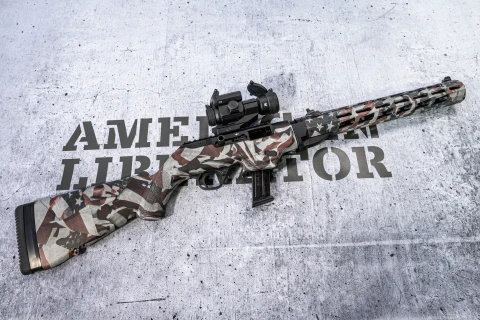
Ruger PC Carbine semi-automatic rifle
-
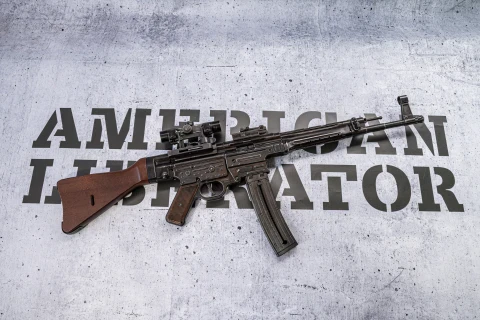
Self-loading small rifle GSG StG44
You can find this weapon in these packages
Filip Vaculík
27. 1. 2024
Super zkušenost. Obsluha ochotná, pro začátečníky i pro děti. Líbilo se mi to, určitě budu opakovat. :-)
Houba II
24. 4. 2023
Velmi příjemný a akční zážitek, byli jsme překvapeni výběrem zbraní. Perfektí akce pro team building nebo adrenalinový dárek. Instruktoři příjemní a trpěliví. Neviděli jsme se naposled :o)
Lucie Zykova
30. 5. 2023
Maximální spokojenost a nadšení. Lektoři měli božskou trpělivost. Děkujeme za skvělý zážitek.
Vítek Novák
27. 1. 2024
Bylo to užasný, krásně sem si zastřílel a instruktoři byli hrozně milí. 5/5
Marek Pšenica
18. 9. 2023
Super ceny střeliva. Vynikající komunikace a proaktivní přístup.
Jan Cimbalník
24. 4. 2023
Objednávka merche vyřízena a doručena bleskově. Kvalitní materiál. Oceňuji velmi profesionální přístup. Díky a doporučuji!
Igor Moon
27. 1. 2024
Úžasný den. Děkujeme za úžasný zážitek. Určitě se rádi vrátíme.🙂
František Jarmar
24. 4. 2023
Profesionální servis a poradenství při výběru zbraní i doplňků. Doporučuji! :)
Jana Tomeckova
27. 1. 2024
Skvělý zážitek, instruktor milý, vše vysvětlil, doporučuji a těším se příště
Radek Vraník
31. 5. 2023
Naše třída měla přednášku. Odnesl jsem si zajímavé a důležité informace. Za mě dobré.
Ondřej Moučka
27. 1. 2024
Parádní zážitek a spousta zajímavých zbraní
Lukáš Coufal
24. 4. 2023
Výborný přístup, skvělá komunikace, velice přátelská atmosféra. Odbornost na úrovni. Skvělý zážitek pro každého zájemce o historii a fandu zbraní.
